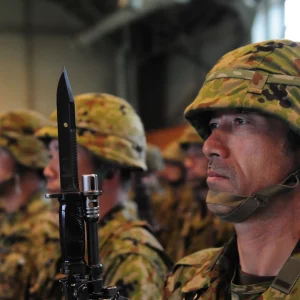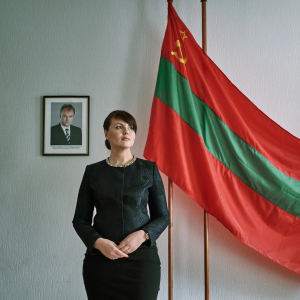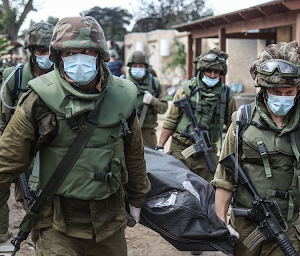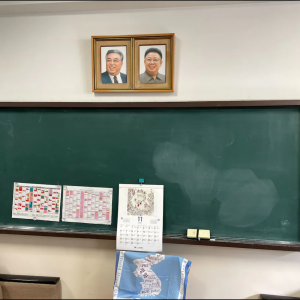Featured Image: Masses gather to grieve and pray outside of St. Anthony’s Church, Kochikade
On the 21st of April 2019, three churches and three luxury hotels were targeted in a series of coordinated suicide bombing attacks across Sri Lanka. The attacks were linked to the National Thowheeth Jama’ath (NTJ), a local Islamist terrorist group whose mission includes the spread of global jihad to the island.
Following the shock of the Easter Sunday attacks on April 21 2019, attention was quickly turned to Sri Lanka’s Muslim population. Fear of backlash against the Muslim community became a predominant concern for civilians, as the treatment of minorities in Sri Lanka opens a Pandora’s box of historical complications. Despite the resilience of the nation, the scars from a 30-year civil war and anxiety surrounding Sinhalese nationalism are difficult to erase. Likewise, the Anti-Muslim Riots of 2018 unveiled a new wave of Sinhalese-Buddhist nationalism spearheaded by the Bodu Bala Sena (BBS), a hardline rightwing Sinhalese-Buddhist nationalist organization. Such instances reflect deep insecurity for both the majority and minorities in Sri Lanka, as groups struggle to preserve an intangible sense of identity.
What makes the Easter attacks a puzzling interplay of identity politics is that largely, the nation’s current ethno-religious divide lies between Buddhists and Muslims. Sri Lanka’s Christian minority is an unusual and unexpected target group; yet, recognizing model minority parallels provides some clarity on the dynamics of identity in Sri Lanka today.
Unwittingly or not, our conceptualization of minorities has likely been informed by the social phenomena of the Model Minority Myth. First coined in 1966 by American sociologist William Petersen, the model minority myth originates from the trend of socioeconomic success of Asian-American communities. To account for the perceived higher degree of socioeconomic success in Asian-American communities, the model minority myth argues that characteristics of obedience, compliance and adherence have afforded Asian-Americans with success. However, these characteristics are entrenched so as to marginalize minorities, as the minority group is made subordinate to the majority group that holds actual social, political, cultural and economic power. This also has the insidious effect of estranging relations between minority groups, who struggle to coexist as a result of conflicting identity constructs.
Parallels can be drawn between the model minority myth and the status of minorities in Sri Lanka, as those who comply with Sinhalese majoritarianism are deemed ‘model’ minorities. However, on the other end of the spectrum lies the ‘raucous’ minority: a group that is deviant, visible, and promotes cultural preservation over integration. I apply and coin the term ‘raucous minority’ for the sake of countering the ‘model minority’, in order to question whether similar standards have been placed on minority groups in Sri Lanka.
Overall, Sri Lanka’s Muslim community is differentiated ethnically and culturally from both Sinhalese and Tamil groups. With the onset of Arabization across global Muslim communities, Sri Lanka’s Muslim communities are often placed adjacent to an Arab identity, which further alienates Muslim communities from a cohesive Sri Lankan identity. By deviating from Sinhalese majoritarianism, Sri Lanka’s Muslim community does appear to be relegated to the status of a raucous minority.
Yet the model minority is insidiously silenced. If neither Sri Lanka’s Muslim population nor Tamil population constitute a model minority, then we are left to assume that Sri Lanka’s Christian population could assume the position of a model minority. Parallels between the Sri Lankan Christian population and the archetypal model minority are evident; unlike Tamil and Muslim populations, many Christians in Sri Lanka are ethnically Sinhalese and are hence integrated with the Sinhalese majority. Masses and church ceremonies are often offered in all 3 official languages, stable relations are established between Buddhist and Christian clergies, and largely, Christians have been exempt from minority conflicts in the nation.
However, in shifting the focus to the Sinhala Buddhist-Muslim divide, the Christian minority was effectively displaced in the aftermath of the Easter bombings. Justly or unjustly, Christianity in Sri Lanka is linked to the island’s colonial history, and is often a reminder of oppressive Western institutions. Despite being the victims of the attack, and despite holding a perceivably closer relationship to the Sinhalese majority, the Christian minority holds little real political power and was left vulnerable by state officials who ignored early warnings of potential attacks. Priyalal Dassanayake, Deputy Inspector General of Sri Lanka’s police force, informed authorities to specifically “pay strict heed to this report and be extra vigilant and cautious of the V.I.P.s and locations coming under your purview,” after receiving information of a planned attack against Catholic churches. Yet, Sri Lanka’s Christian minority forewent all state protections, and were displaced in healing initiatives following the attack. As the smallest minority religion in the country, comprising only 6.1% of the population, this implied state erasure and neglect.
As much as there is a level of truth behind the model and raucous minority binary, it is eventually only a myth: a widely-held, yet ultimately false and problematic belief. Whilst the raucous minority can be applied to Muslim minorities in Sri Lanka, characteristics of the model minority are also identifiable: namely, the economic success of Muslim communities. Sri Lankan Moor Muslims, comprising 9.7% of the country’s total population, originated as traders and are integral to the economic fabric of the nation. The Muslim community shares a higher overall portion of wealth than the Sinhalese, and the Easter Sunday attackers were members of one of the wealthiest business families in the country. Despite controversy, minority rights are outlined in Sri Lanka’s constitution, with reservations and exceptions made for particular Muslim communities whose practices otherwise run contrary to common law (notably, the controversial provision of the Muslim Marriage and Divorce Act, which grants Muslim communities the right to dictate their own marriage laws on the basis of Shari’a law, and not common law). And, in the aftermath of the Easter bombings, special state protections and symbolic healing processes were extended to Muslim communities. Emphasis was placed on rectifying the Buddhist-Muslim divide; namely, the symbolic reconciliation of Buddhist-Muslim tensions through Eid celebrations at Town Hall where state officials, the Sri Lankan armed forces, and Buddhist monks were invited to show solidarity with the Muslim minority.
It appears that Sri Lanka does clamor for a model minority, yet the binary of model versus raucous remains ambiguous. Being ‘raucous’ becomes synonymous with being ethnically and culturally divergent, and Sri Lanka’s Muslims have been vilified and alienated as a result. However, the raucous minority has enjoyed equal opportunities in socioeconomic progress, and are guaranteed group-differentiated constitutional protections. Likewise, being a model minority has afforded Christian communities with a comfortable sociocultural position – and yet, this has also resulted in the silencing and marginalization of the community. The model-raucous binary can also have catastrophic effects of complicating the relationship between minority groups, who struggle to negotiate their polarized identities. The raucous group may consider the model group to be favored; the model group might envy the attention that the raucous minority generates, and thus the inter-minority relationship is problematized through muddled identity constructs.
Sri Lanka must recognize that clamoring for a model minority has harmful ramifications for minority groups, and that minority groups must be protected beyond their relation to the majority. Majoritarian narratives cannot be used to override minority struggles; the Sinhalese-Buddhist narrative cannot be superimposed on all conflicts in the country, as it nullifies the complexities of Sri Lanka’s layered ethnic polarization. Above all, the balance between cultural preservation and integration will remain a central question for future policymakers, as Sri Lanka continues to navigate majoritarian conflicts.
Featured Image from Groundviews, Security, Freedom and Co-Existence after the Easter-Sunday Attacks in Sri Lanka. Dr. Kalana Senaratne, May 8 2019.






Be First to Comment